Fungi
Fungi are a diverse group of organisms that include yeasts, molds, and mushrooms. They are important for their roles in decomposition, nutrient cycling, and food production. Fungi are also used in biotechnology and medicine.
Characteristics of Fungi
1. Cell Structure: Fungi are eukaryotic organisms, which means their cells have a well-defined nucleus and other membrane-bound organelles.
2. Nutrition: Fungi are heterotrophic, meaning they obtain their nutrients by absorbing organic matter from their environment. They secrete enzymes to break down organic material into simpler compounds that can be absorbed.
3. Reproduction: Fungi can reproduce both sexually and asexually. In sexual reproduction, they produce spores that can develop into new individuals. Asexual reproduction can occur through fragmentation, budding, or the formation of specialized structures.
Types of Fungi
1. Yeast: Single-celled fungi that reproduce asexually by budding. They are used in baking and brewing.
2. Molds: Multi-cellular fungi that form visible mycelium (thread-like structures) and reproduce by producing spores. Some molds can cause food spoilage and others are used in the production of cheese and antibiotics.
3. Mushrooms: The reproductive structure of certain fungi that produce spores. Some mushrooms are edible, while others are toxic.
Ecological Importance
Fungi play a crucial role in ecosystems as decomposers, breaking down dead organic matter and returning nutrients to the soil. They form mutualistic relationships with plants, helping them absorb water and nutrients from the soil. Fungi are also important in the carbon and nitrogen cycles.
Human Uses
Fungi have many practical applications, such as in the production of food and beverages (e.g., bread, beer, and cheese), as well as in the pharmaceutical industry for the production of antibiotics and other drugs. They are also used in bioremediation to clean up environmental pollution.
Study Guide
- What are the characteristics of fungi?
- Explain the different types of fungi.
- Discuss the ecological importance of fungi.
- How are fungi used by humans?
- Describe the process of fungal reproduction.
Use this study guide to review the key concepts and prepare for discussions or assessments on the topic of fungi.
[Fungi] Related Worksheets and Study Guides:
.◂Science Worksheets and Study Guides Seventh Grade. Ecosystems, food chains and food webs

 Activity Lesson
Activity Lesson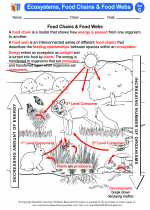
 Worksheet/Answer key
Worksheet/Answer key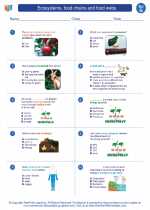
 Worksheet/Answer key
Worksheet/Answer key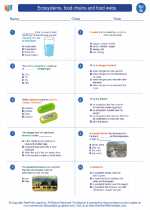
 Worksheet/Answer key
Worksheet/Answer key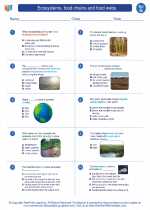
 Vocabulary/Answer key
Vocabulary/Answer key
 Vocabulary/Answer key
Vocabulary/Answer key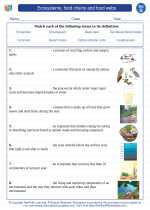
 Vocabulary/Answer key
Vocabulary/Answer key
 Vocabulary/Answer key
Vocabulary/Answer key
 Vocabulary/Answer key
Vocabulary/Answer key
